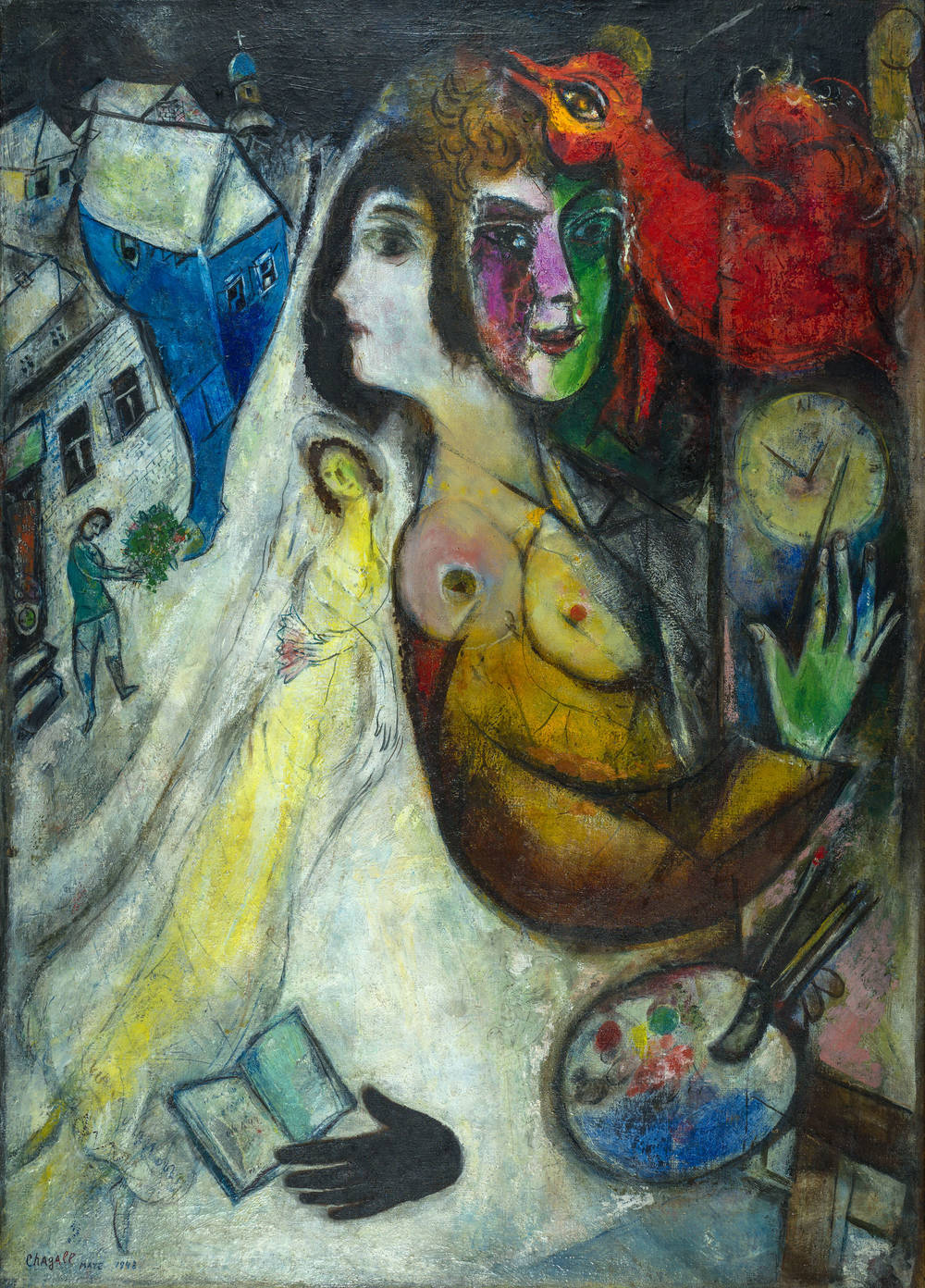There seems to be no limit to fantasy in the oeuvre of Marc Chagall (1887–1985). He is regarded as one of the most idiosyncratic artists of modernity. The Schirn Kunsthalle Frankfurt is now dedicating an extensive exhibition to the painter in Germany for the first time in fifteen years.
From November 4, 2022, to February 19, 2023, "Chagall: World in Turmoil" sheds light on a hitherto less well-known side of his oeuvre: Chagall’s works of the 1930s and 1940s, when his colorful palette became increasingly darker.
Displacement, persecution and emigration
As a Jewish painter, Chagall was again and again exposed to existential threats, which had formative effects on his life and work. In the early 1930s, he addressed the ever more aggressive anti-Semitism in his art, and finally emigrated to the United States in 1941 due to persecution by the National Socialist regime. His artistic oeuvre in these years touches on central topics like identity, home, and exile. With roughly sixty haunting paintings, works on paper, and costumes from the 1930s and 1940s, the exhibition traces the artist’s search for a visual vocabulary in view of displacement, persecution, and emigration. It presents important works in which Chagall occupied himself to a greater extent with the Jewish lifeworld, numerous self-portraits, his turn to allegorical and biblical topics, the important designs for the "ballets Aleko" (1942) and "The Firebird" (1945) while in US-American exile, the recurring examination of his hometown of Vitebsk, and major works such as "The Falling Angel" (1923/1933/1947).
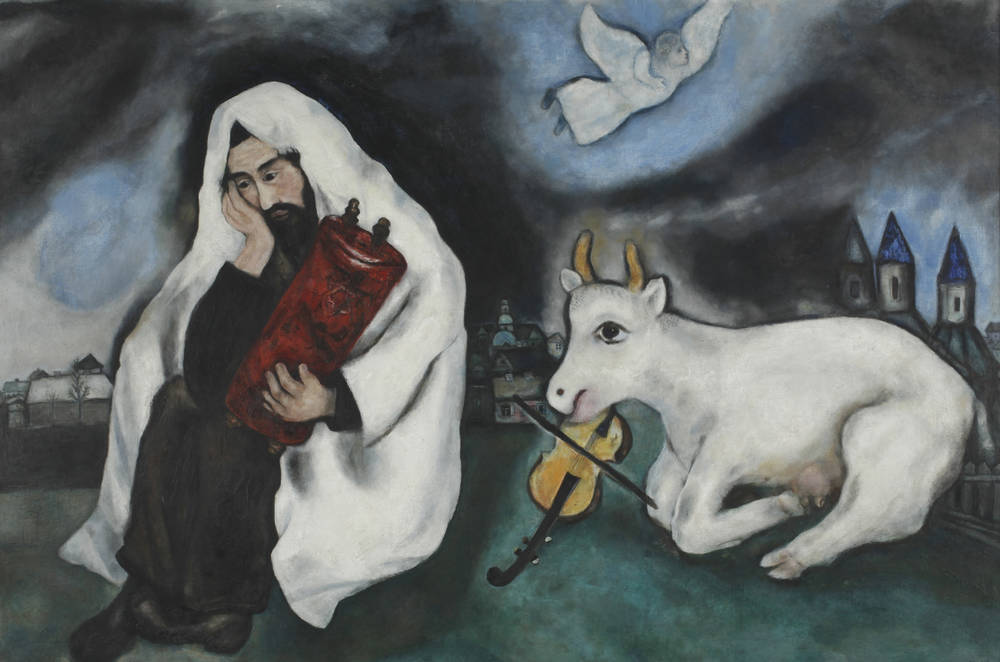
An Examination of the Jewish Identity
The exhibition at the Schirn focuses on works that Marc Chagall produced in the 1930s and 1940s in a thematically structured tour with seven sections. A growing interest in Jewish topics and an intensive examination of his own Jewish identity began in Marc Chagall’s work in the early 1930s. The important painting "Solitude", created in 1933, the year that the National Socialists seized power in Germany, forms the beginning of the tour of the exhibition. It shows a Jew in a melancholic pose in front of a burning city. He is holding a Torah scroll protectively, while a cow playing a violin offers him consolation. At this time, on commission of the art dealer Ambroise Vollard, Chagall also realized illustrations of the Old Testament, which are being presented at the Schirn as well. Against this backdrop, he traveled with his family to the British mandate territory of Palestine in 1931. There he created drawings and paintings with a timeless, for Chagall unusual, documentary execution, which concentrate on the depiction of sacred Jewish sites like the Wailing Wall and interiors of synagogues and leave out contemporary life in Palestine. Drawings of the Synagogues in Vilnius (1935), which were produced during a trip to then Polish Wilna, today Vilnius, can also be viewed in the exhibition.
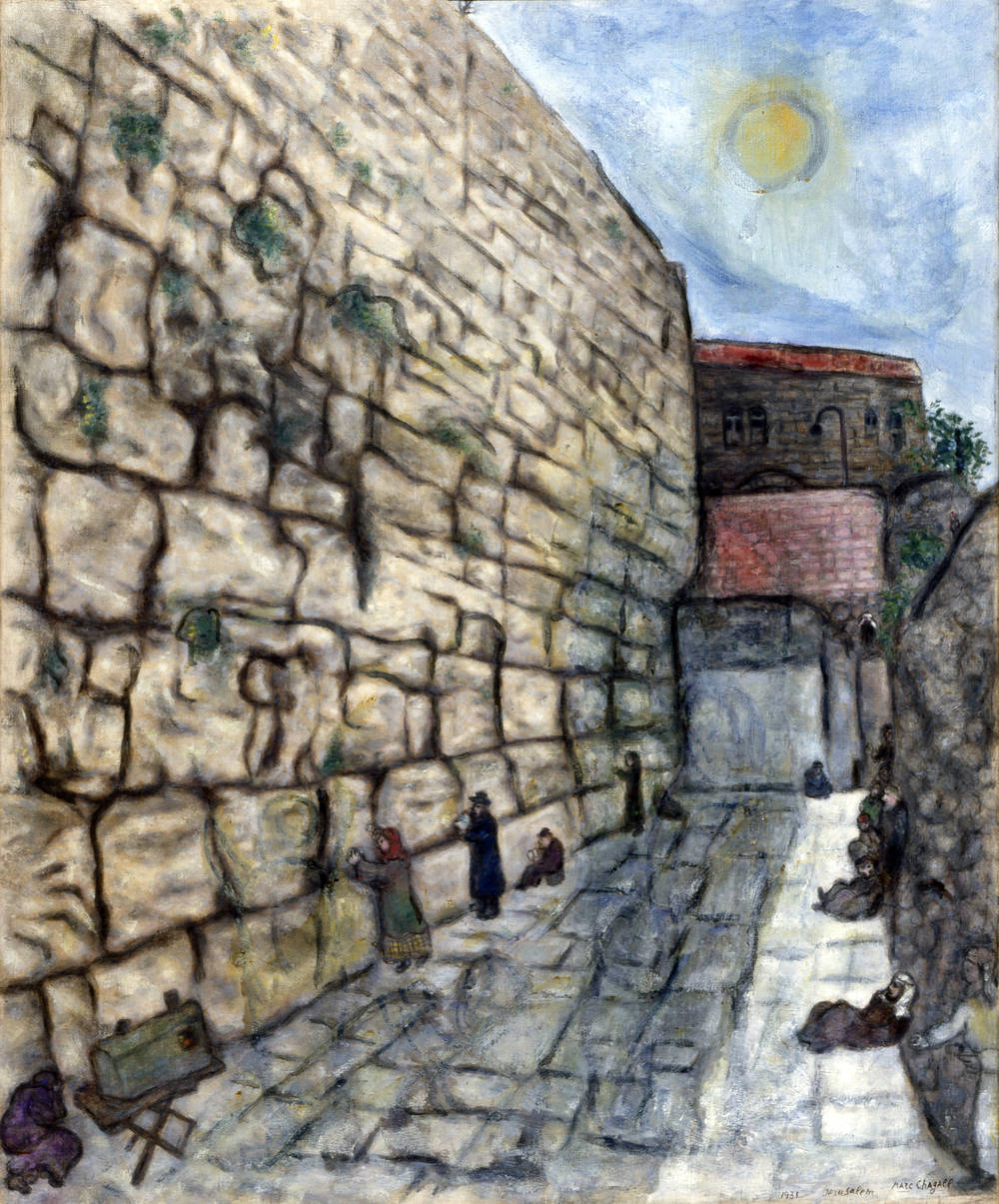
Constantly on the move, constantly on the run
Chagall shifted the center of his life again and again over the years. In 1922, he left post-revolutionary Russia, and after a temporary stay in Berlin, lived with his wife, Bella Chagall, and their daughter, Ida, in the French capital Paris starting in 1923. In 1941, he fled with his family from persecution by the National Socialists to the United States and returned from exile to France in 1948, following the end of the Second World War. Unlike in France, where some of Chagall’s works like "Bonjour Paris" (1939–42) show an approach to the country with typical landscape or city views, the United States is barely reflected in the artist’s works. Chagall instead occupied himself with the events in Europe and his homeland. One recurring motif, particularly in the 1930s and 1940s, is his hometown Vitebsk, et al. in "The Village Madonna" (1938‒42), "The Dream" (ca. 1938/39), or "Bei mir zu Hause" (1943). For Chagall, it became a symbol of the yearning for his lost, destroyed home.
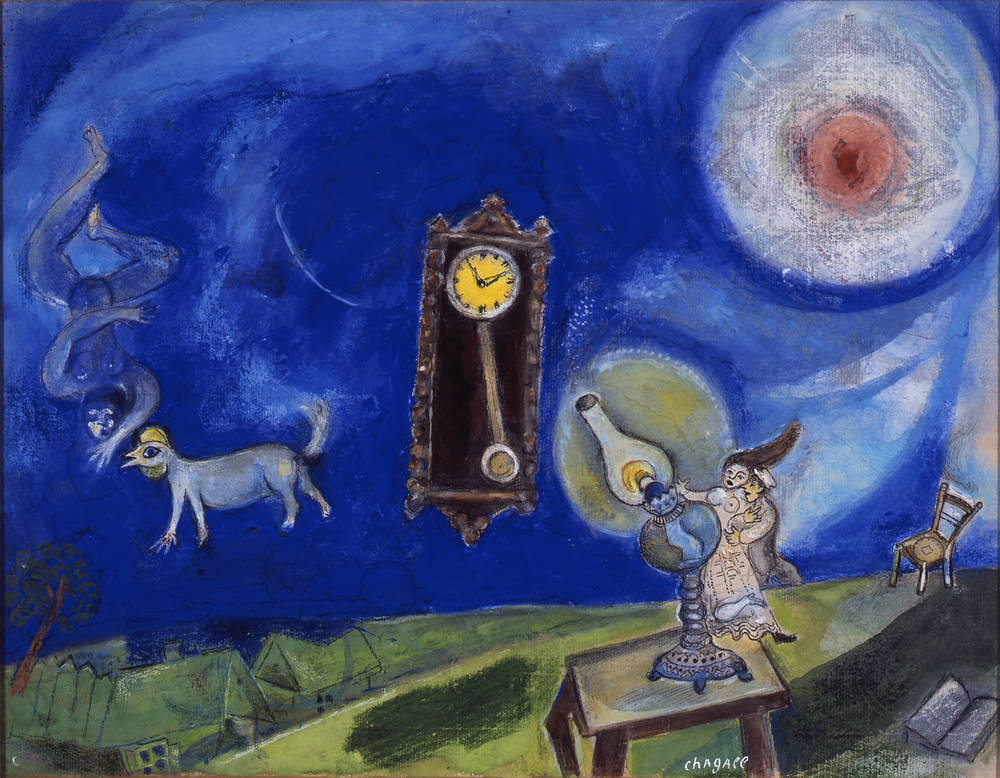
the crucified Christ
At the end of the 1930s, Chagall found a visual language for the political and personal events of his era in religious and primarily Christian motifs. For the artist, the crucified Christ became the central allegory for the suffering of European Jews. In numerous works like "Yellow Crucifixion" (1942) and "Apocalypse in Lilac" (Capriccio) (1945), he clearly characterized Christ as a Jew by means of attributes like the Jewish prayer shawl (tallit) or phylacteries (tefillin). By combining Christian iconography with Jewish symbols, Chagall developed a new narrative and stylized Christ as a Jewish martyr.
An extraordinary domestic and intellectual partnership united Chagall with his wife, Bella. He visualized the iconic picture motif of a floating, intimately connected pair of lovers in numerous paintings. Chagall took up the couple motif in various variants and poses, as singular figures moving in the pictorial space, but more frequently as a bride and groom, embedded in village-like scenery. The two monumental paintings "Around Her" and "Wedding Candles", in which Chagall expressed his grief over Bella’s sudden death, in 1945.
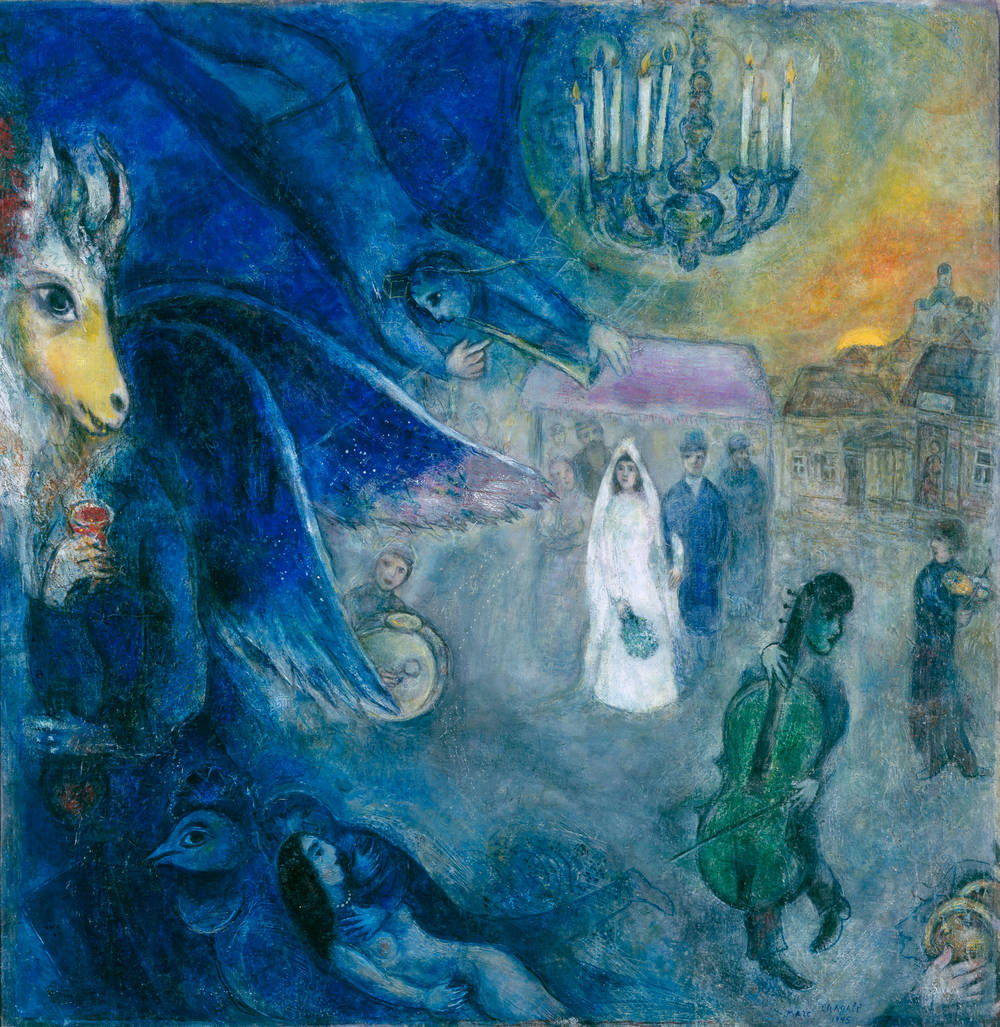
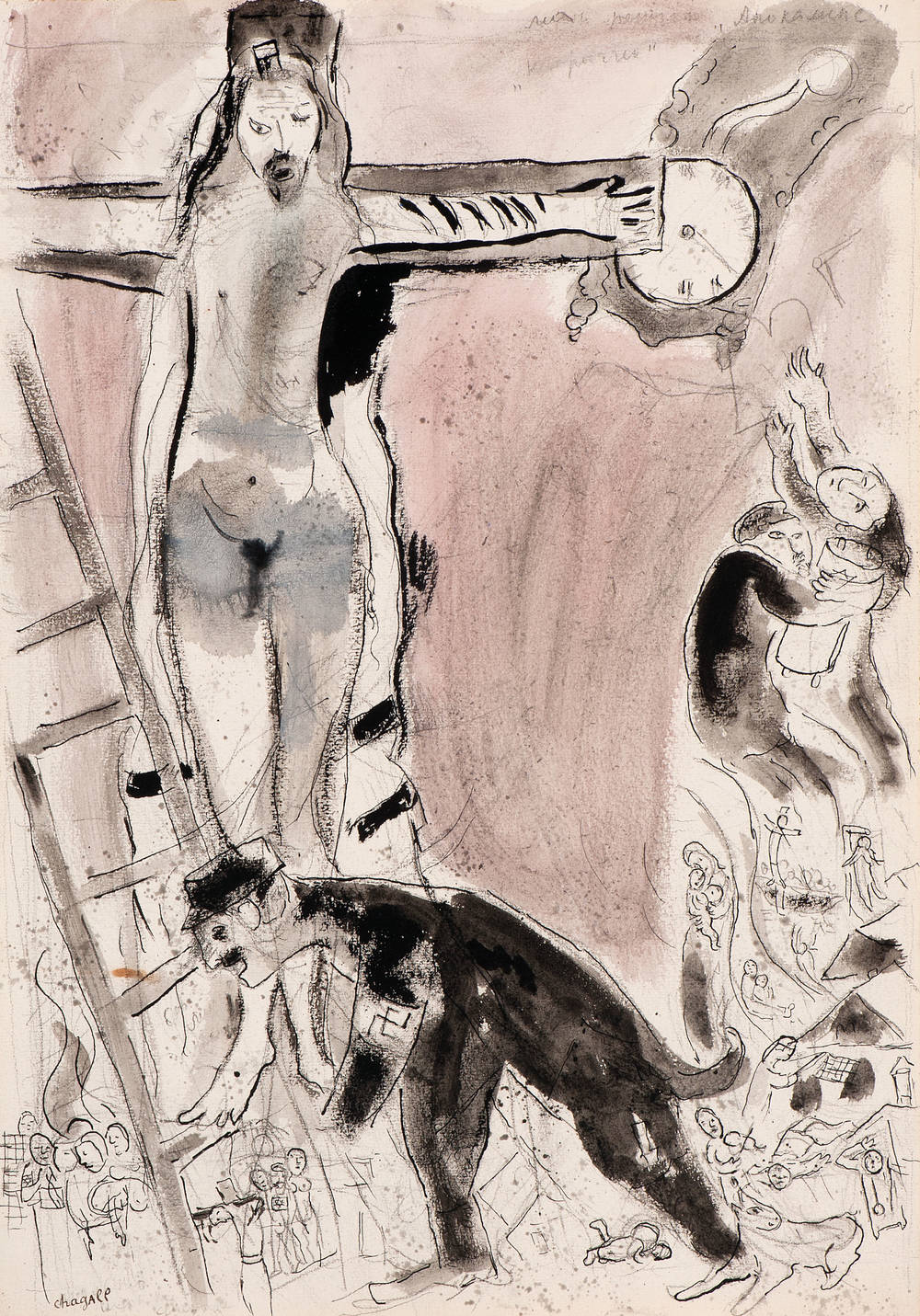
The Falling Angel
The work "The Falling Angel" has a special position in Chagall’s oeuvre. The artist worked on this painting again and again over a twenty-four-year period of time in Paris, US-American exile, and back in Europe again. Based on sketches in the exhibition, it is possible to observe the development of the pictorial elements, a darkening of the color palette, and Chagall’s intensive examination in this programmatic work of the 1930s and 1940s. The artist himself described the painting after 1945 as “the first picture in a series of forebodings.” The current dating, 1923 – 1933 – 1947, identifies the points in time at which the three different versions were completed.
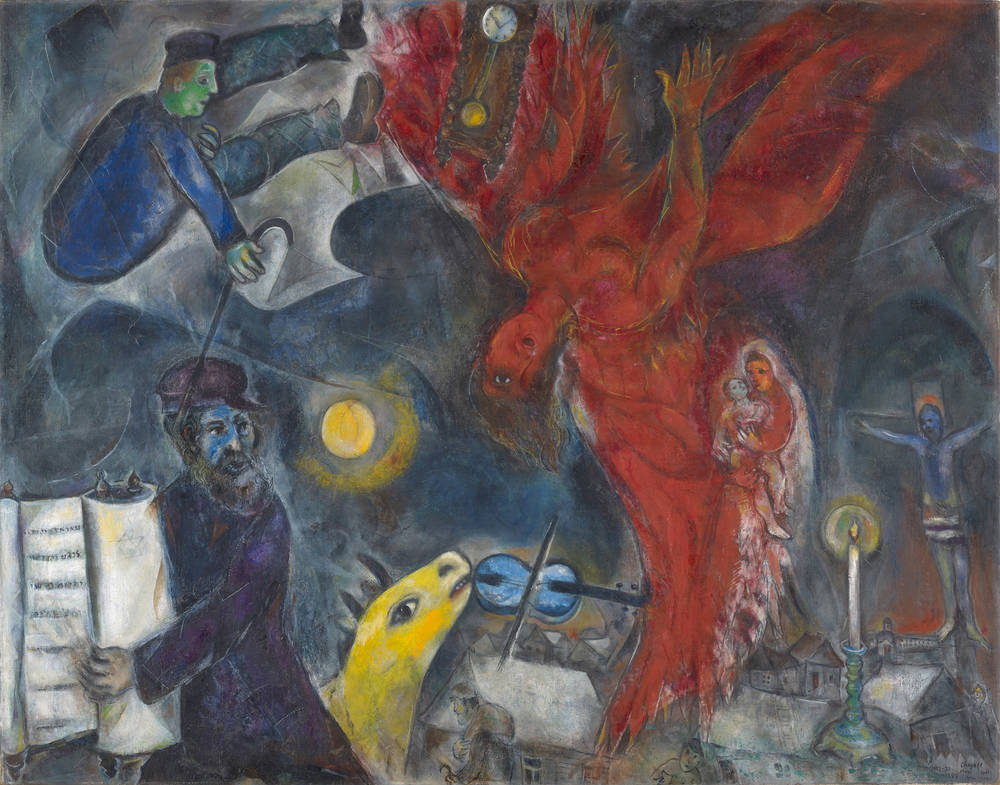
The Schirn also sheds light on Chagall’s work during his exile in New York. Besides paintings, costumes from the year 1941 for the ballet Aleko, set to music by Pyotr Ilyich Tchaikovsky, can be seen in the exhibition, along with costume and curtain designs for the The Firebird, to music by Igor Stravinsky from 1945. For Chagall, the stage productions not only were important public commissions; they also gave him the opportunity to work with other Russian expatriates like the choreographer Léonide Massine.
The end of the Second World War is shown in an ambivalent way in Chagall’s oeuvre. In paintings like "The Soul of the City" (1945) or "Self-Portrait with Wall Clock" (1947), he addressed the new stage of his life, as well as his inner conflict resulting from his personal situation. In many paintings such as "Cow with a Parasol" (1946), it is possible to make out a more positive general mood, even though the topic of the Shoah remains a fixed component in Chagall’s later works. Chagall’s inner strife in this phase of transition is also apparent in the two-faced portraits, in which he frequently combined his own face with that of his deceased wife, for instance in "The Black Glove" (1923‒48). In August of 1948, Chagall left his US-American exile and returned to France with his new partner, Virginia Haggard.
